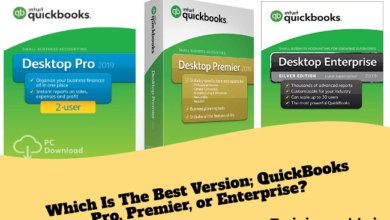7 Tech Tools For Solopreneurs Swear By

There are over 17.7 million independent workers, most of whom are solopreneurs, and an alive-and-well subpopulation comprised of 24 million Americans who aspire to become independent workers.
As the demand for solopreneurs climbs off the charts, flexible schedules, be-your-own-boss empowerment, and unparalleled job security are now an attainable reality for those who’ve long dreamed of a solopreneur lifestyle.
If you’re considering setting up a business as a solopreneur, the technology you invest in is one of the most important factors in determining your success.
Below is a list of seven tech tools that will make you a successful solopreneur.
Table of Contents
List of 7 Tech Tools For Solopreneurs
A virtual mailbox
A virtual mailbox is a rented mailbox. You can choose its location based on whichever is more convenient to you.
With this tech tool in your artillery, you’ll be able to manage your mail, no matter where you are, through the free app by giving instructions to discard, scan or forward it.
A virtual mailbox results in lower costs, saves time, increases convenience, and saves you space.
Website
A website offers consumers a platform where they can find your goods and services when researching online.
In addition, a website makes you searchable on Google and other search engines. That way, it’s easier for potential customers and clients to find your business.
Also, consider securing a professional custom domain, contact page, and all the web design structures you can employ for superior user experience.
Read more: 3 Most Accessible Tools for Beginner Web Designers
Evernote – Tech Tools For Solopreneurs
Evernote is a handy tool you should consider including in your solopreneur toolbox. View it as a brain extension.
There are several ways you can use Evernote, depending on the kind of business you operate. Whatever your intended purpose, Evernote allows you to jot down your genius marketing campaign ideas or last-minute epiphanies related to your business structure and access this information from any location.
Dropbox/Box
Dropbox and Box serve the same purpose. These accounts are an essential tool that allows you to share, store, and transfer files from one computer to another or between people.
Besides ensuring easy access to critical files, Dropbox is an essential tool for backing up information that could otherwise dissolve into cyberspace, never to be found. Users can count on Dropbox for document retrieval, should a good-intentioned intern delete a high-priority presentation or process doc.
Google Drive
One may wonder why you need Google Drive when you have Dropbox or Box, but there are more than enough reasons to justify the use of both tech tools.
Google Drive allows you to create documents, spreadsheets, presentations, incorporate Google Docs, and store files. It seems to be better than Dropbox and Box, primarily because, as a Google product, it allows you to share files through your Google contacts.
Also, accessing Drive is easy and quick.
Time Out
Time Out is an app that ensures you don’t overwork. It forces you to take breaks or time-outs from your computer after working for a while. These breaks are essential for your overall productivity.
Depending on your needs, you can customize the app to have your own interval time. For example, you can set a 20-second break every 15 minutes and a 15 minutes break every two hours.
Learn more: 10 Digital Marketing Tools to Upscale a New Business
Join.me – Tech Tools For Solopreneurs
Join.me enables you to hold virtual meetings hosting up to ten participants and chats. It’s an instant screen-sharing service with multi-monitor support. Thus, Join.me is a handy tool for solopreneurs constantly meeting clients virtually.
You only need to send a link to the people you want to share your screen with, and they can view it from their devices as long as they have a browser.
Wrap up
These tech tools for solopreneurs are a must-have in your toolbox as a solopreneur. Remember, technology is constantly evolving with the emergence of more tools promising better user experience (UX) and user interface (UI) and making life even easier. However, the best tools are those that are effective and can withstand the whirlwind of apps launching every day.
Comments
0 comments




